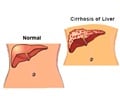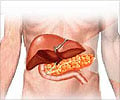Heavy drinking often leads to trauma, and can also complicate subsequent assessment and patient care. New findings show that testing for blood alcohol levels (BALs) can identify high-risk patients, even if they previously denied excessive drinking, and help to predict alcohol-related health complications.
Too much alcohol often causes trauma, complicates assessment of injury, and interferes with inpatient care. Even though 20 to 37 percent of accident cases in trauma centers are alcohol-related, some trauma patients are reluctant to self report their drinking. A new study has found that testing for alcohol biomarkers – particularly blood alcohol levels (BALs) – can identify high-risk patients admitted to trauma centers who had denied excessive drinking.Results will be published in the October issue of Alcoholism: Clinical & Experimental Research and are currently available at Early View.
"Alcohol use is associated with higher rates of motor vehicle accidents, falls, injuries inflicted by weapons, and workplace injuries than in persons not using alcohol," said Michael F. Fleming, professor of family medicine and corresponding author for the study. "In addition, patients processed through emergency may not be aware of their injury severity until the alcohol is out of their system, and in persons suffering from head trauma it is difficult to assess changes in mental status."
"Alcohol is the single most robust risk factor for physical trauma," added Jean-Bernard Daeppen, professor of medicine at Lausanne University Hospital in Switzerland. "An elevated BAL is not just having a glass before trauma. Most patients admitted with positive BALs after trauma have an alcohol-use disorder (AUD), often severe."
"The primary test used to assess recent alcohol use is to ask the patient and sometimes a family member or friend who was present at the time of the accident," said Fleming. "BALs are also frequently used in US-based trauma centers, however, since alcohol leaves the body at the rate of one drink per hour, BALs can be misleading if the blood is drawn hours after the injury occurred. Liver function tests have limited value as they are neither sensitive nor specific for acute alcohol use. Newer alcohol biomarkers that assess alcohol use over weeks have promise but there is limited research on these among trauma patients."
Fleming and his colleagues collected data on 213 patients (166 males, 47 females) admitted to a university hospital after trauma and tested for BALs and carbohydrate deficient transferin (CDT). More than 90 percent was admitted due to motor vehicle accidents, and the remainder for falls, bicycle/pedestrian accidents, and penetrating trauma such as gunshot and knife wounds. Collected measures included the development of alcohol withdrawal, infections, respiratory problems, cardiac events, thromboembolism, and length of stay.
Advertisement
"Elevated BALs at the time of admission are associated with higher rates of complications," said Fleming, "and strongly predict the development of delirium treatments. Further research is needed on CDT and other alcohol biomarkers to determine their clinical application in trauma patients."
Advertisement
"Our finding of 22 percent with a positive BAL is actually on the low side compared to other emergency-department trauma studies," noted Fleming. "Most studies report 30 to 40 percent positive BALs. Additionally, persons who are alcoholic are more likely to minimize their alcohol use than most social drinkers who often view their use as normal; since seven to eight percent of males and two to three percent of women in the general population are alcoholic, our findings of 7.5 percent who tested positive despite denial is about right."
"The relationship between BALs and withdrawal and adverse hospital events indicates that patients with AUDs develop many problems during hospitalization, such as longer hospital stays, more complications, more costs," added Daeppen. "There is no doubt that BALs should be tested systematically in admitted trauma patients. A cheap test identifying 22 percent of individuals with a condition that is likely to be associated with major morbidity and costs is an excellent option. This is especially true when approximately 1 in 4 patients with an AUD would have been missed without BAL, as shown by this study."
"While there has been some concern that insurance companies may refuse payment for hospitalization due to a positive BAL," said Fleming, "this is like saying they are not going to pay for treatment of a heart attack or asthma or a stroke in someone who admits to smoking. Just because someone is drinking does not mean alcohol caused the accident. All we really know is that theirs is a greater risk. On a related note, BALs performed as part of routine care are not admissible in court unless chain-of-custody procedures are followed."
Source-Eurekalert
SRM














